Numerical Analysis on Heat Transfer Characteristics of Supercritical CO2 in Heated Vertical Up-Flow Tube
Abstract
1. Introduction
2. Thermal-Physical Properties and Idealized Heat Transfer Model
3. Numerical Model and Method
3.1. The Governing Equations
3.2. Physical Model and Gird Generation
3.3. The Boundary Conditions
3.4. Grid Independence
3.5. Model Validation
4. Results and Discussion
4.1. Mechanism of Heat Transfer Deterioration
4.2. The Effect of Heat Flux
4.3. The Effect of Mass Flux
5. Conclusions
- The occurrence of HTD is ascribed to the comprehensive effects of multiple factors. The vapor-like film with a large thermal resistance covering the heated surface prevents heat from the tube wall from transferring to the cooler bulk fluid. Simultaneously, it is another important reason for HTD that the fluid near the interface between vapor-like and liquid-like, and in the core region gradually approaches laminarization. Due to inadequate momentum and heat diffusion, heat transfer in the core fluid is seriously suppressed. Further, the radial velocity vector of fluid near the wall is initially toward the center of the tube, which results in the heated surface failing to be cooled effectively by the fluid in radial direction.
- The formation of HTR is mainly attributed to two factors. The increased turbulent kinetic energy promotes heat transfer in radial direction, especially near the interface between liquid-like and vapor-like and in the liquid-like core region. The radial velocity vector of supercritical CO2 is towards the tube wall at HTR stage, thus the tube wall can be cooled by the fluid in radial direction.
- For the relatively high heat flux, owing to the thicker vapor-like film and the worse film property near the wall, the more heat cannot be removed timely from the heated wall, which results in a higher wall temperature and even more serious HTD. For the relatively low mass flux, the vapor-like film is thicker, and its property is worse, and the lower axial velocity and the level of turbulent kinetic energy weaken heat transfer in axial and radial directions, which result in HTD being more likely to occur.
Author Contributions
Funding
Conflicts of Interest
References
- Holcomba, G.R.; Carney, C.; Doğan, Ö.N.F. Oxidation of alloys or energy applications in supercritical CO2 and H2O. Corros. Sci. 2016, 109, 22–35. [Google Scholar] [CrossRef]
- Dostal, V. A Supercritical Carbon Dioxide Cycle for Next Generation nNuclear Reactors. Ph.D. Thesis, Massachusetts Institute of Technology, Cambridge, MA, USA, 2004. [Google Scholar]
- Al-Sulaiman, F.A.; Atif, M. Performance comparison of different supercritical carbon dioxide Brayton cycles integrated with a solar power tower. Energy 2015, 82, 61–71. [Google Scholar] [CrossRef]
- Mecheri, M.; Moullec, Y.L. Supercritical CO2 Brayton cycles for coal-fired power plants. Energy 2016, 103, 758–771. [Google Scholar] [CrossRef]
- Yang, Y.; Bai, W.; Wang, Y.; Zhang, Y.F.; Li, H.Z.; Yao, M.Y.; Wang, H.J. Coupled simulation of the combustion and fluid heating of a 300MW supercritical CO2 boiler. Appl. Therm. Eng. 2017, 113, 259–267. [Google Scholar] [CrossRef]
- Xu, J.L.; Sun, E.H.; Li, M.J.; Liu, H.; Zhu, B.G. Key issues and solution strategies for supercritical carbon dioxide coal fired power plant. Energy 2018, 157, 227–246. [Google Scholar] [CrossRef]
- Zhang, Q.; Li, H.X.; Lei, X.L.; Zhang, J.; Kong, X.F. Study on identification method of heat transfer deterioration of supercritical fluids in vertically heated tubes. Int. J. Heat Mass Transf. 2018, 127, 674–686. [Google Scholar] [CrossRef]
- Yamagata, K.; Nishikawa, K.; Hasegawa, S.; Fujii, T.; Yoshida, S. Forced convective heat transfer to supercritical water flowing in tubes. Int. J. Heat Mass Transf. 1972, 15, 2575–2593. [Google Scholar] [CrossRef]
- Mokry, S.; Pioro, I.; Farah, A.; King, K.; Gupta, S.; Peiman, W.; Kirillov, P. Development of supercritical water heat-transfer correlation for vertical bare tubes. Nucl. Eng. Des. 2011, 241, 1126–1136. [Google Scholar] [CrossRef]
- Chen, W.W.; Fang, X.D. A new heat transfer correlation for supercritical water flowing in vertical tubes. Int. J. Heat Mass Transf. 2014, 78, 156–160. [Google Scholar] [CrossRef]
- Kline, N.; Feuerstein, F.; Tavoularis, S. Onset of heat transfer deterioration in vertical pipe flows of CO2 at supercritical pressures. Int. J. Heat Mass Transf. 2018, 118, 1056–1068. [Google Scholar] [CrossRef]
- Zhu, B.G.; Xu, J.L.; Wu, X.M.; Xie, J.; Li, M.J. Supercritical “boiling” number, a new parameter to distinguish two regimes of carbon dioxide heat transfer in tubes. Int. J. Therm. Sci. 2019, 136, 254–266. [Google Scholar] [CrossRef]
- Jackson, J.D. Fluid flow and convective heat transfer to fluids at supercritical pressure. Nucl. Eng. Des. 2013, 264, 24–40. [Google Scholar] [CrossRef]
- Koshizuka, S.; Takano, N.; Oka, Y. Numerical analysis of deterioration phenomena in heat transfer to supercritical water. Int. J. Heat Mass Transf. 1995, 38, 3077–3084. [Google Scholar] [CrossRef]
- Fan, Y.H.; Tang, G.H.; Li, X.L.; Yang, D.L.; Wang, S.Q. Correlation evaluation on circumferentially average heat transfer for supercritical carbon dioxide in non-uniform heating vertical tubes. Energy 2019, 170, 480–496. [Google Scholar] [CrossRef]
- Huang, D.; Wu, Z.; Sunden, B.; Li, W. A brief review on convection heat transfer of fluids at supercritical pressures in tubes and the recent progress. Appl. Energy 2016, 162, 494–505. [Google Scholar] [CrossRef]
- Liao, S.M.; Zhao, T.S. An experimental investigation of convection heat transfer to supercritical carbon dioxide in miniature tubes. Int. J. Heat Mass Transf. 2002, 45, 5025–5034. [Google Scholar] [CrossRef]
- Holman, J.P.; Rea, S.N.; Howard, C.E. Forced convection heat transfer to Freon12 near the critical state in a vertical annulus. Int. J. Heat Mass Transf. 1965, 8, 1095–1100. [Google Scholar] [CrossRef]
- Wang, J.G.; Li, H.X.; Yu, S.Q.; Chen, T.K. Investigation on the characteristics and mechanisms of unusual heat transfer of supercritical pressure water in vertically-upward tubes. Int. J. Heat Mass Transf. 2011, 54, 1950–1958. [Google Scholar] [CrossRef]
- Zhang, S.J.; Xu, X.X.; Liu, C.; Liu, X.X.; Dang, C.B. Experimental investigation on the heat transfer characteristics of supercritical CO2 at various mass flow rates in heated vertical-flow tube. Appl. Therm. Eng. 2019, 157, 113687. [Google Scholar] [CrossRef]
- Elias, E.; Chambre, P. Inverted-annular film boiling heat transfer from vertical surfaces. Nucl. Eng. Des. 1981, 64, 249–257. [Google Scholar] [CrossRef]
- Jasper, J.J. The Surface Tension of Pure Liquid Compounds. J. Phys. Chem. Ref. Data 1972, 1, 841. [Google Scholar] [CrossRef]
- Yang, Z.; Peng, X.F.; Ye, P. Numerical and experimental investigation of two phase flow during boiling in a coiled tube. Int. J. Heat Mass Transf. 2008, 51, 1003–1016. [Google Scholar] [CrossRef]
- Da, R.E.; Del, C.D. Numerical Simulation of Laminar Liquid Film Condensation in a Horizontal Circular Minichannel. J. Heat Transf. 2012, 134, 051019. [Google Scholar]
- Liu, L.; Xiao, Z.J.; Yan, X.; Zeng, X.K.; Huang, Y.P. Heat transfer deterioration to supercritical water in circular tube and annular channel. Nucl. Eng. Des. 2013, 255, 97–104. [Google Scholar] [CrossRef]
- Wang, K.Z.; Xu, X.X.; Wu, Y.Y.; Liu, C.; Dang, C.B. Numerical investigation on heat transfer of supercritical CO2 in heated helically coiled tubes. J. Supercrit. Fluids 2015, 99, 112–120. [Google Scholar] [CrossRef]
- Menter, F.R. Two-equation eddy-viscosity turbulence models for engineering applications. AIAA J. 1994, 32, 1598–1605. [Google Scholar] [CrossRef]
- Li, Z.H.; Wu, Y.X.; Tang, G.L.; Zhang, D.L.; Lu, J.F. Comparison between heat transfer to supercritical water in a smooth tube and in an internally ribbed tube. Int. J. Heat Mass Transf. 2015, 84, 529–541. [Google Scholar] [CrossRef]
- Wang, X.C.; Xiang, M.J.; Huo, H.J.; Liu, Q. Numerical study on nonuniform heat transfer of supercritical pressure carbon dioxide during cooling in horizontal circular tube. Appl. Therm. Eng. 2018, 141, 775–787. [Google Scholar] [CrossRef]
- Shen, Z.; Yang, D.; Wang, S.Y.; Wang, W.Y.; Li, Y.D. Experimental and numerical analysis of heat transfer to water at supercritical pressures. Int. J. Heat Mass Transf. 2017, 108, 1676–1688. [Google Scholar] [CrossRef]
- Roache, P.J. Quantification of uncertainty in computational fluid dynamics. Annu. Rev. Fluid Mech. 1997, 29, 123–160. [Google Scholar] [CrossRef]
- Mansour, A.; Laurien, E. Numerical error analysis for three-dimensional CFD simulations in the two-room model containment THAI+: Grid convergence index, wall treatment error and scalability tests. Nucl. Eng. Des. 2018, 326, 220–233. [Google Scholar] [CrossRef]
- Luo, C.; Wu, S.; Song, K.W.; Hua, L.; Wang, L.B. Thermo-hydraulic performance optimization of wavy fin heat exchanger by combining delta winglet vortex generators. Appl. Therm. Eng. 2019, 163, 114343. [Google Scholar] [CrossRef]
- Wang, L.L.; Chen, Z.J.; Meng, H. Numerical study of conjugate heat transfer of cryogenic methane in rectangular engine cooling channels at supercritical pressures. Appl. Therm. Eng. 2013, 54, 237–246. [Google Scholar] [CrossRef]
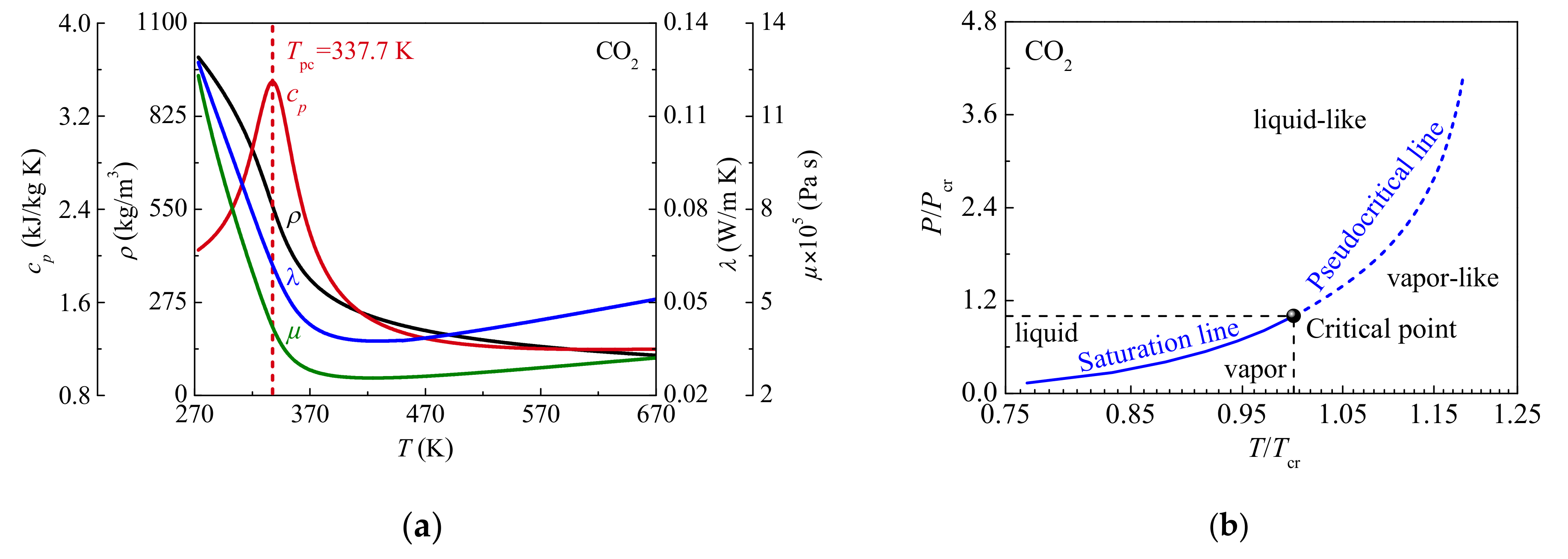
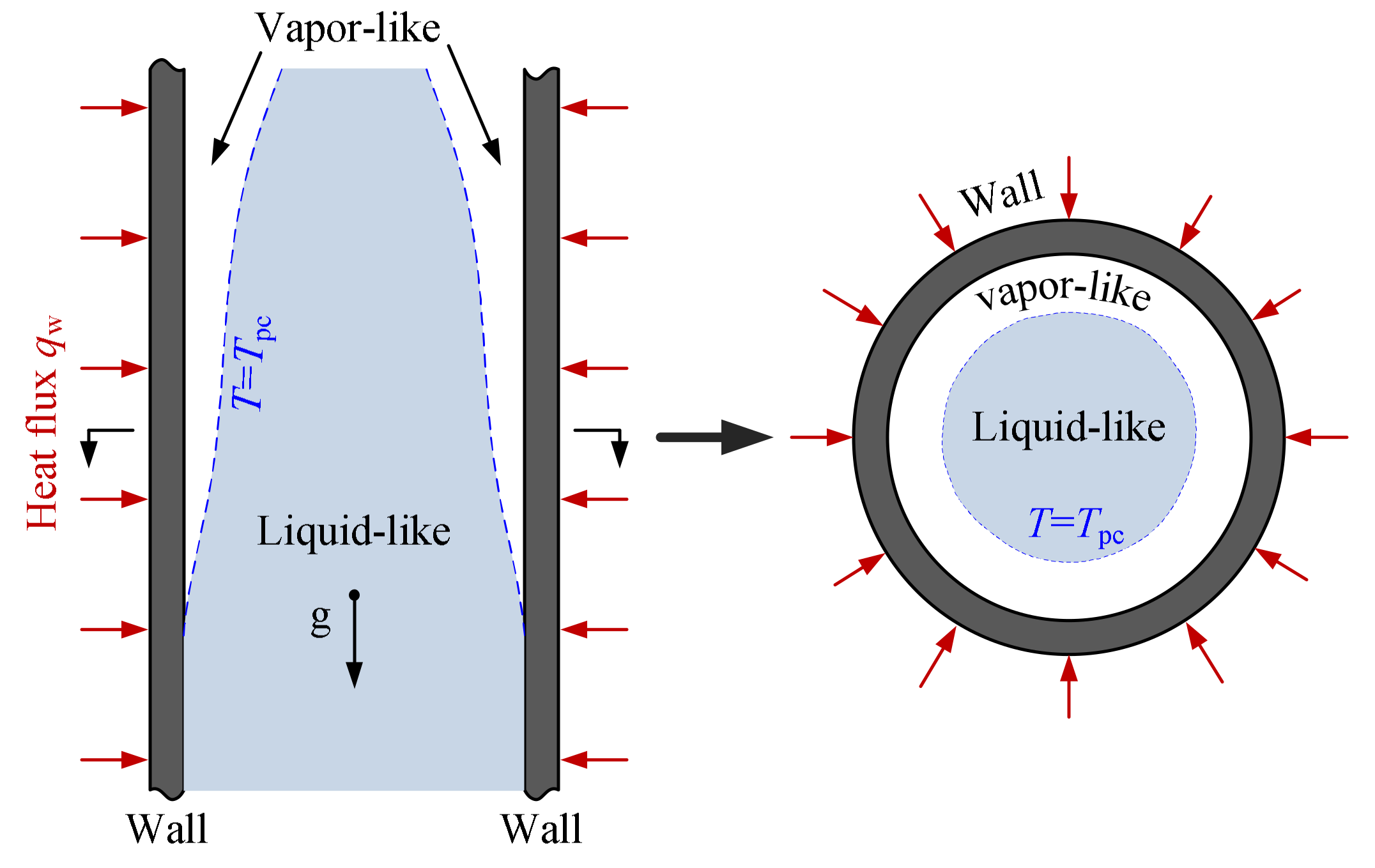
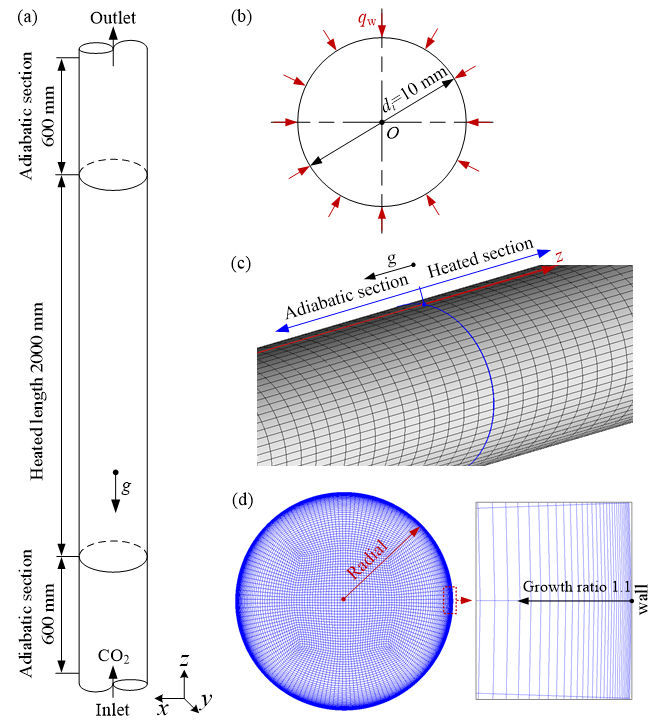
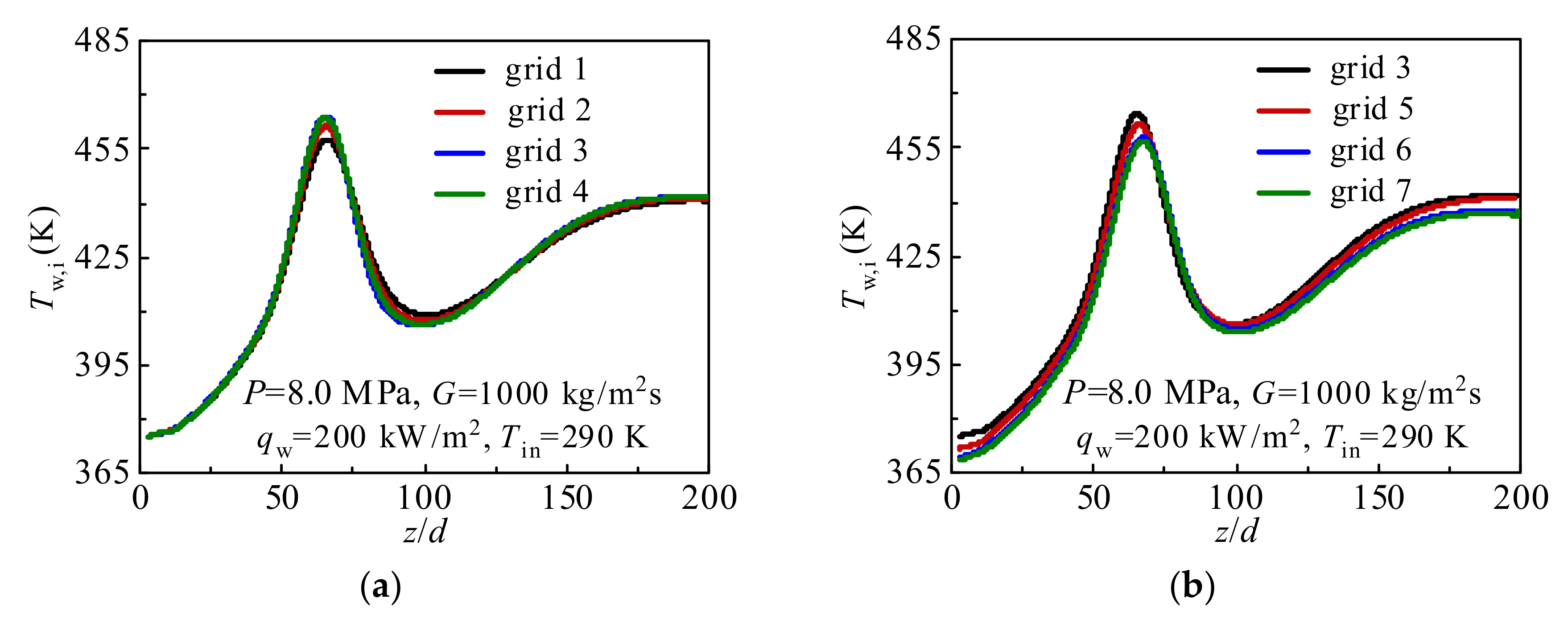
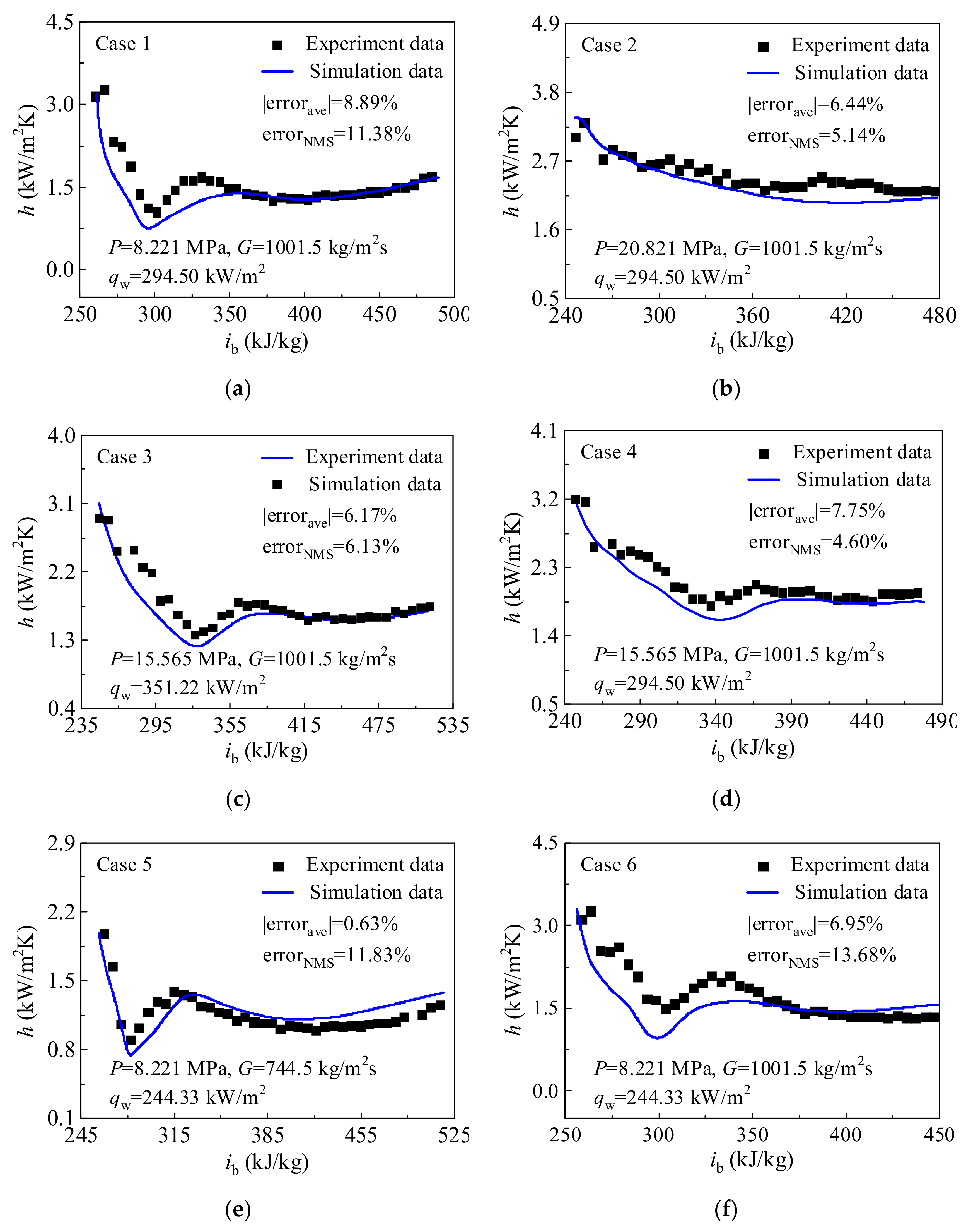
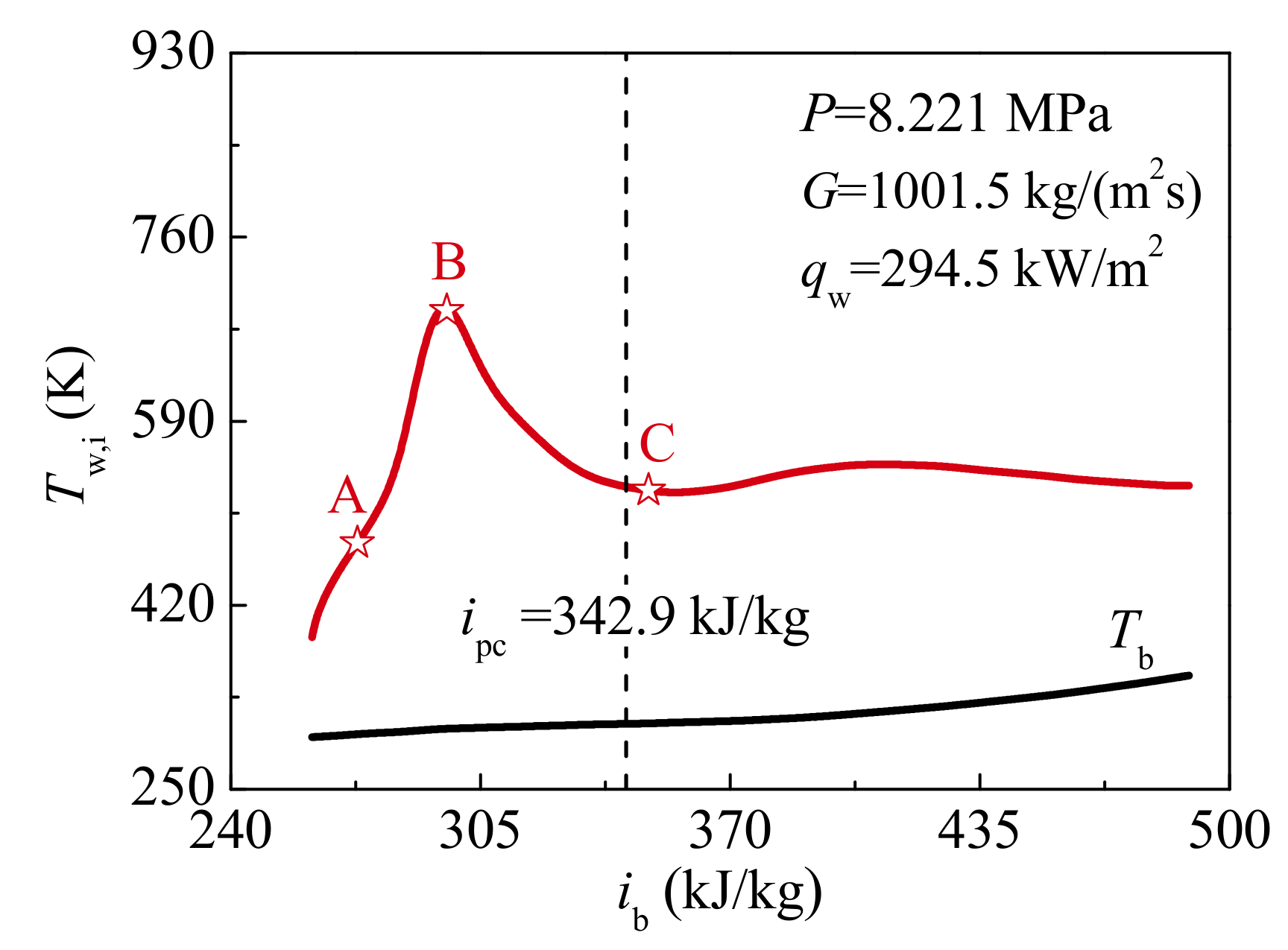

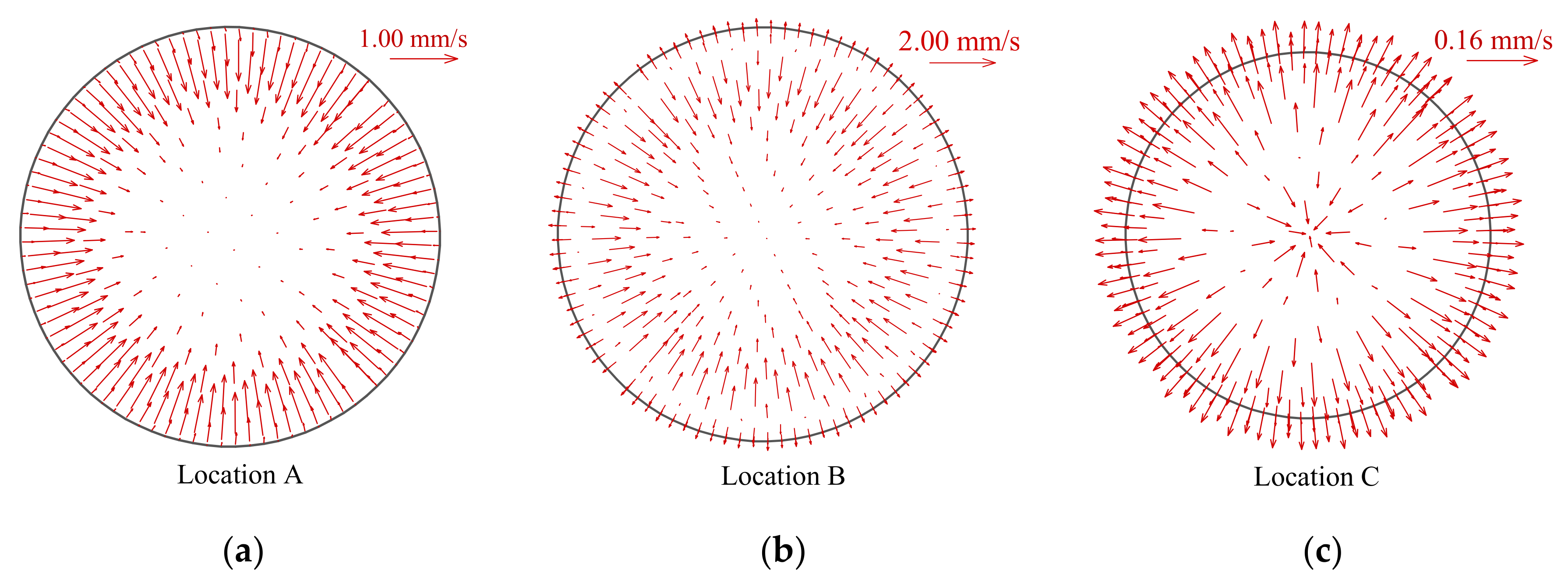
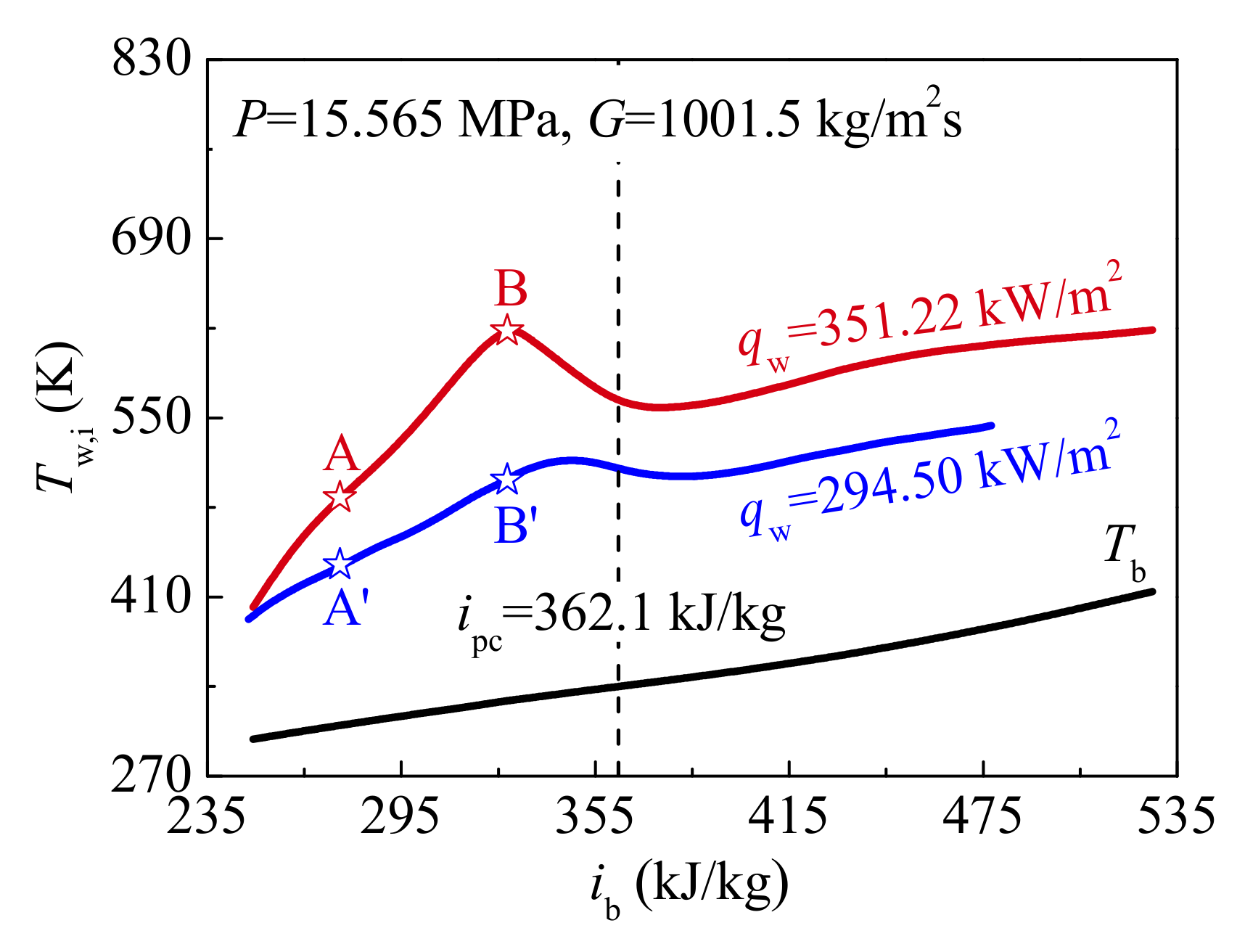
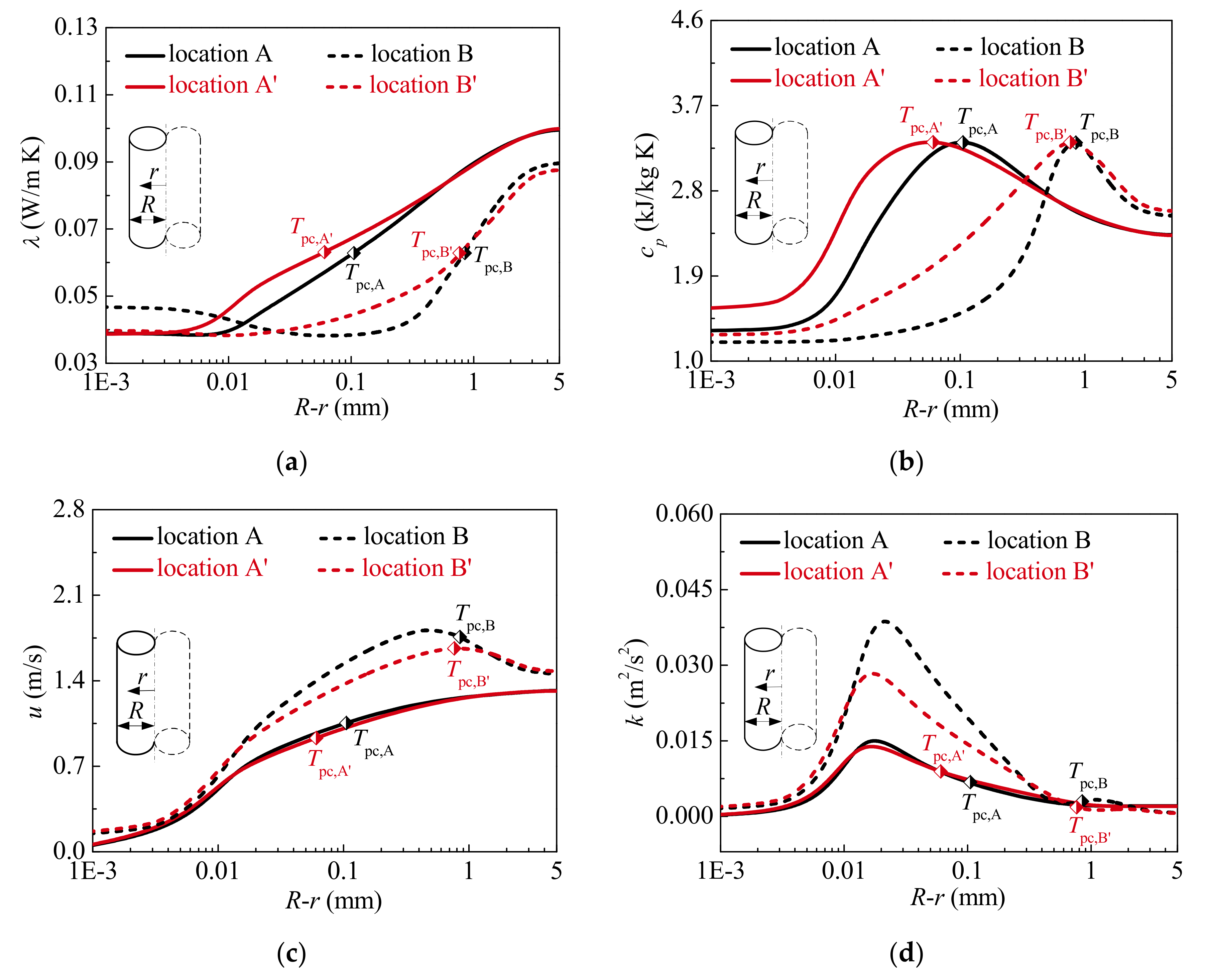
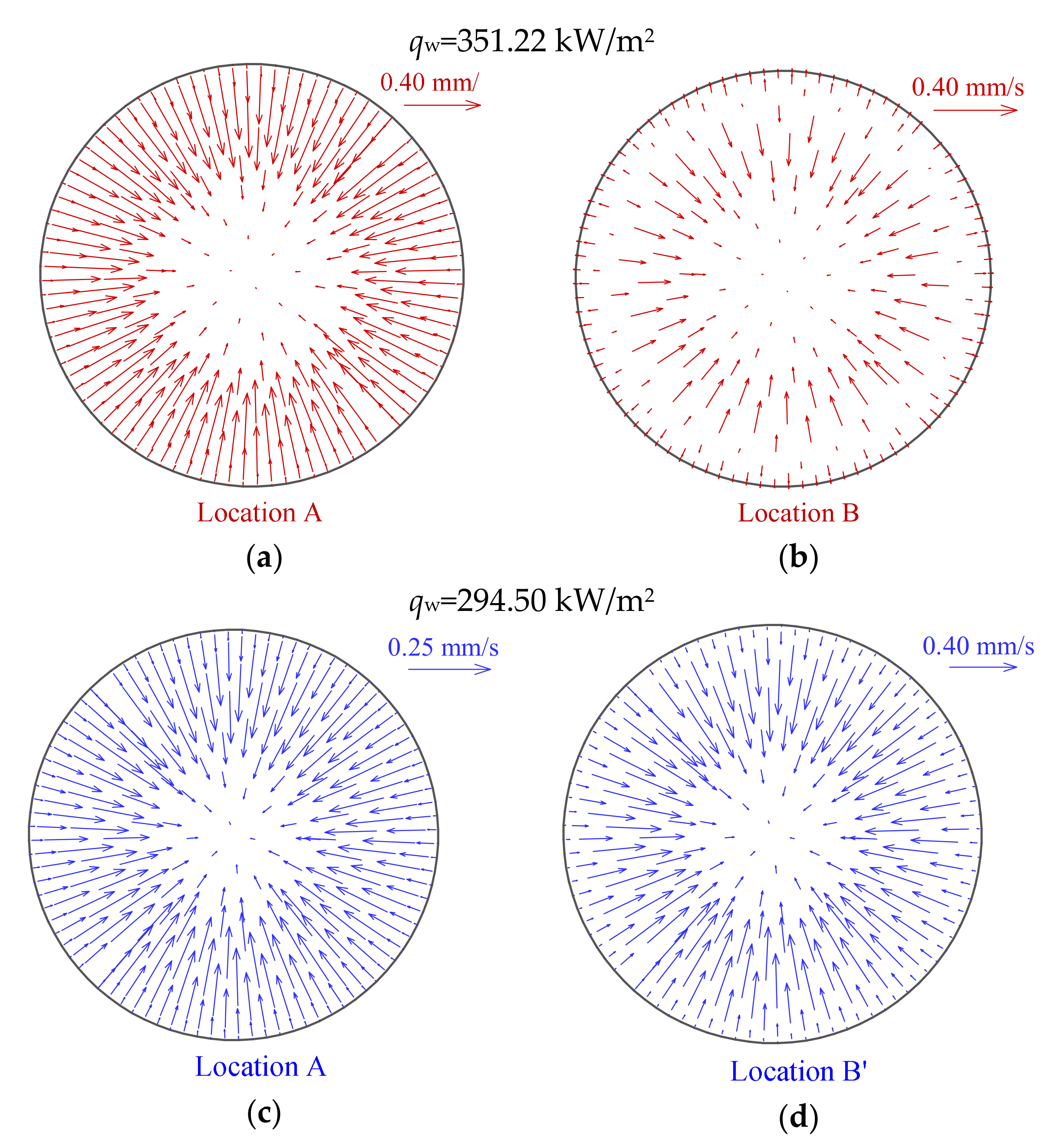
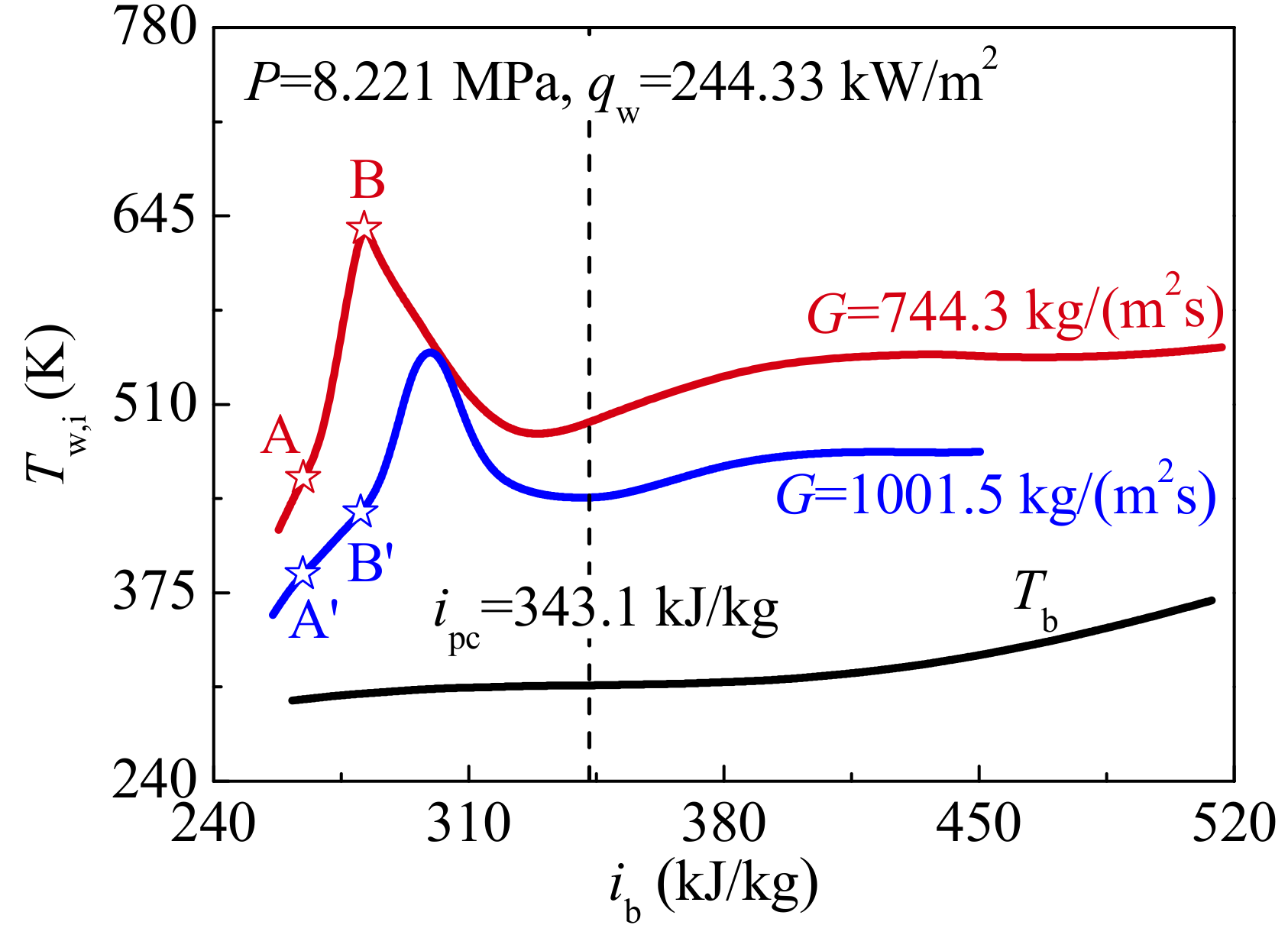

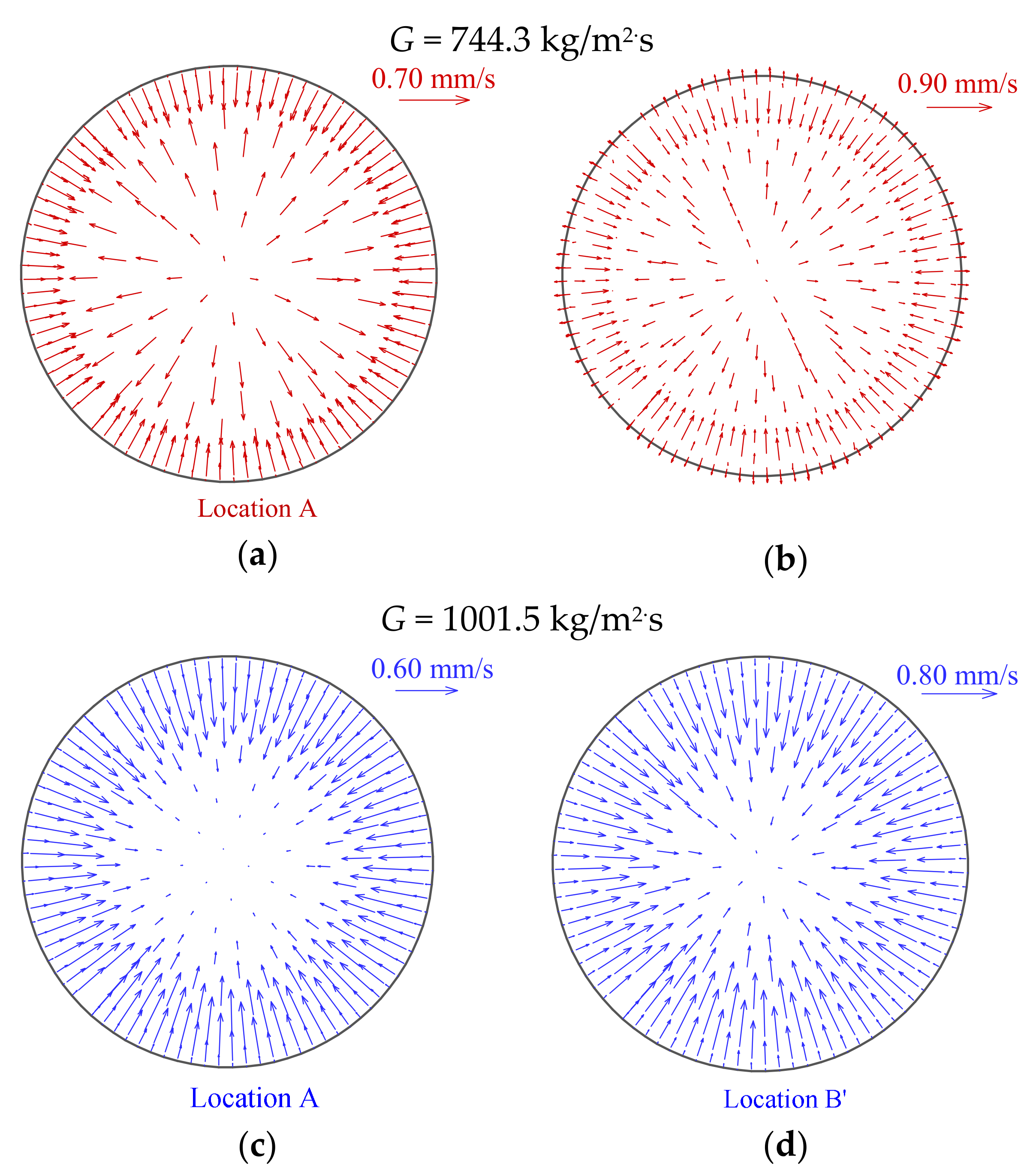
| Grid No. | Number of Nodes | Total Number of Nodes | |
|---|---|---|---|
| Radial | Axial | ||
| 1 | 44 | 100 | 0.29 × 106 |
| 2 | 44 | 230 | 0.67 × 106 |
| 3 | 44 | 390 | 1.13 × 106 |
| 4 | 44 | 480 | 1.39 × 106 |
| 5 | 50 | 390 | 1.44 × 106 |
| 6 | 65 | 390 | 2.03 × 106 |
| 7 | 75 | 390 | 3.35 × 106 |
| Case No. | P (MPa) | G (kg/m2s) | qw (kW/m2) | Tin (K) | Rein |
|---|---|---|---|---|---|
| 1 | 8.221 | 1001.5 | 294.50 | 298.0 | 1.473 × 105 |
| 2 | 20.821 | 1001.5 | 294.50 | 299.1 | 1.051 × 105 |
| 3 | 15.565 | 1001.5 | 351.22 | 298.0 | 1.148 × 105 |
| 4 | 15.565 | 1001.5 | 294.50 | 295.8 | 1.112 × 105 |
| 5 | 8.221 | 744.5 | 244.33 | 296.5 | 1.053 × 105 |
| 6 | 8.221 | 1001.5 | 244.33 | 296.5 | 1.417 × 105 |
© 2020 by the authors. Licensee MDPI, Basel, Switzerland. This article is an open access article distributed under the terms and conditions of the Creative Commons Attribution (CC BY) license (http://creativecommons.org/licenses/by/4.0/).
Share and Cite
Yan, C.; Xu, J.; Zhu, B.; Liu, G. Numerical Analysis on Heat Transfer Characteristics of Supercritical CO2 in Heated Vertical Up-Flow Tube. Materials 2020, 13, 723. https://doi.org/10.3390/ma13030723
Yan C, Xu J, Zhu B, Liu G. Numerical Analysis on Heat Transfer Characteristics of Supercritical CO2 in Heated Vertical Up-Flow Tube. Materials. 2020; 13(3):723. https://doi.org/10.3390/ma13030723
Chicago/Turabian StyleYan, Chenshuai, Jinliang Xu, Bingguo Zhu, and Guanglin Liu. 2020. "Numerical Analysis on Heat Transfer Characteristics of Supercritical CO2 in Heated Vertical Up-Flow Tube" Materials 13, no. 3: 723. https://doi.org/10.3390/ma13030723
APA StyleYan, C., Xu, J., Zhu, B., & Liu, G. (2020). Numerical Analysis on Heat Transfer Characteristics of Supercritical CO2 in Heated Vertical Up-Flow Tube. Materials, 13(3), 723. https://doi.org/10.3390/ma13030723





